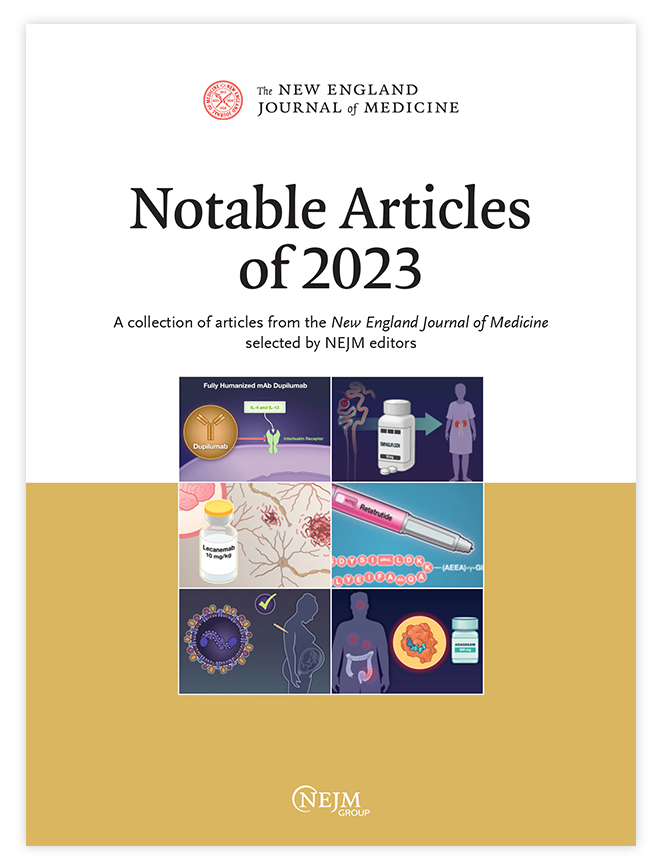线粒体捐献和植入前mtDNA疾病基因检测。
IF 96.2
1区 医学
Q1 MEDICINE, GENERAL & INTERNAL
引用次数: 0
摘要
携带线粒体DNA (mtDNA)致病变异的妇女所生的孩子有患一系列临床综合征的风险,这些综合征统称为mtDNA病。原核移植的线粒体捐献包括将患病妇女的受精卵的核基因组移植到未受影响妇女捐赠的去核受精卵上。因此,原核移植为受影响的妇女提供了生育与遗传相关的孩子的可能性,并降低了患mtDNA疾病的风险。方法:我们向一系列携带致病性mtDNA变异的妇女提供线粒体捐赠(通过原核移植)或植入前遗传学检测(PGT),这些妇女寻求减少这些变异向子女的传播。异质性患者(在一定比例的mtDNA拷贝中存在变异)接受PGT治疗,同源性患者(在所有mtDNA拷贝中存在变异)或异质性升高的患者接受原核移植。结果22例患者中有8例(36%)和39例患者中有16例(41%)分别接受了原核移植或PGT的卵胞浆内单精子注射手术。原核移植导致8例活产和1例妊娠。PGT导致18例活产。母亲接受原核移植的8名婴儿血液中的异质性水平从无法检测到到16%不等。6例新生儿的母体致病性mtDNA变异水平比相应的去核受精卵低95 ~ 100%,2例新生儿低77 ~ 88%。在母亲接受PGT治疗的18名婴儿中,有10名婴儿的异质性水平是已知的,从检测不到到7%不等。结论通过原核移植的线粒体捐赠与人胚胎的生存能力是一致的。一个包括原核转移和PGT的综合项目有效地减少了同质和异质致病mtDNA变异的传播。(由英国国民健康服务体系和其他机构资助。)本文章由计算机程序翻译,如有差异,请以英文原文为准。
Mitochondrial Donation and Preimplantation Genetic Testing for mtDNA Disease.
BACKGROUND
Children born to women who carry pathogenic variants in mitochondrial DNA (mtDNA) are at risk for a range of clinical syndromes collectively known as mtDNA disease. Mitochondrial donation by pronuclear transfer involves transplantation of nuclear genome from a fertilized egg from the affected woman to an enucleated fertilized egg donated by an unaffected woman. Thus, pronuclear transfer offers affected women the potential to have a genetically related child with a reduced risk of mtDNA disease.
METHODS
We offered mitochondrial donation (by pronuclear transfer) or preimplantation genetic testing (PGT) to a series of women with pathogenic mtDNA variants who sought to reduce the transmission of these variants to their children. Patients with heteroplasmy (variants present in a proportion of copies of mtDNA) were offered PGT, and patients with homoplasmy (variants present in all copies of mtDNA) or elevated heteroplasmy were offered pronuclear transfer.
RESULTS
Clinical pregnancies were confirmed in 8 of 22 patients (36%) and 16 of 39 patients (41%) who underwent an intracytoplasmic sperm injection procedure for pronuclear transfer or for PGT, respectively. Pronuclear transfer resulted in 8 live births and 1 ongoing pregnancy. PGT resulted in 18 live births. Heteroplasmy levels in the blood of the 8 infants whose mothers underwent pronuclear transfer ranged from undetectable to 16%. Levels of the maternal pathogenic mtDNA variant were 95 to 100% lower in 6 newborns and 77 to 88% lower in 2 newborns than in the corresponding enucleated zygotes. Heteroplasmy levels were known for 10 of the 18 infants whose mothers underwent PGT and ranged from undetectable to 7%.
CONCLUSIONS
We found that mitochondrial donation through pronuclear transfer was compatible with human embryo viability. An integrated program involving pronuclear transfer and PGT was effective in reducing the transmission of homoplasmic and heteroplasmic pathogenic mtDNA variants. (Funded by NHS England and others.).
求助全文
通过发布文献求助,成功后即可免费获取论文全文。
去求助
来源期刊

New England Journal of Medicine
医学-医学:内科
CiteScore
145.40
自引率
0.60%
发文量
1839
审稿时长
1 months
期刊介绍:
The New England Journal of Medicine (NEJM) stands as the foremost medical journal and website worldwide. With an impressive history spanning over two centuries, NEJM boasts a consistent publication of superb, peer-reviewed research and engaging clinical content. Our primary objective revolves around delivering high-caliber information and findings at the juncture of biomedical science and clinical practice. We strive to present this knowledge in formats that are not only comprehensible but also hold practical value, effectively influencing healthcare practices and ultimately enhancing patient outcomes.
 求助内容:
求助内容: 应助结果提醒方式:
应助结果提醒方式:


